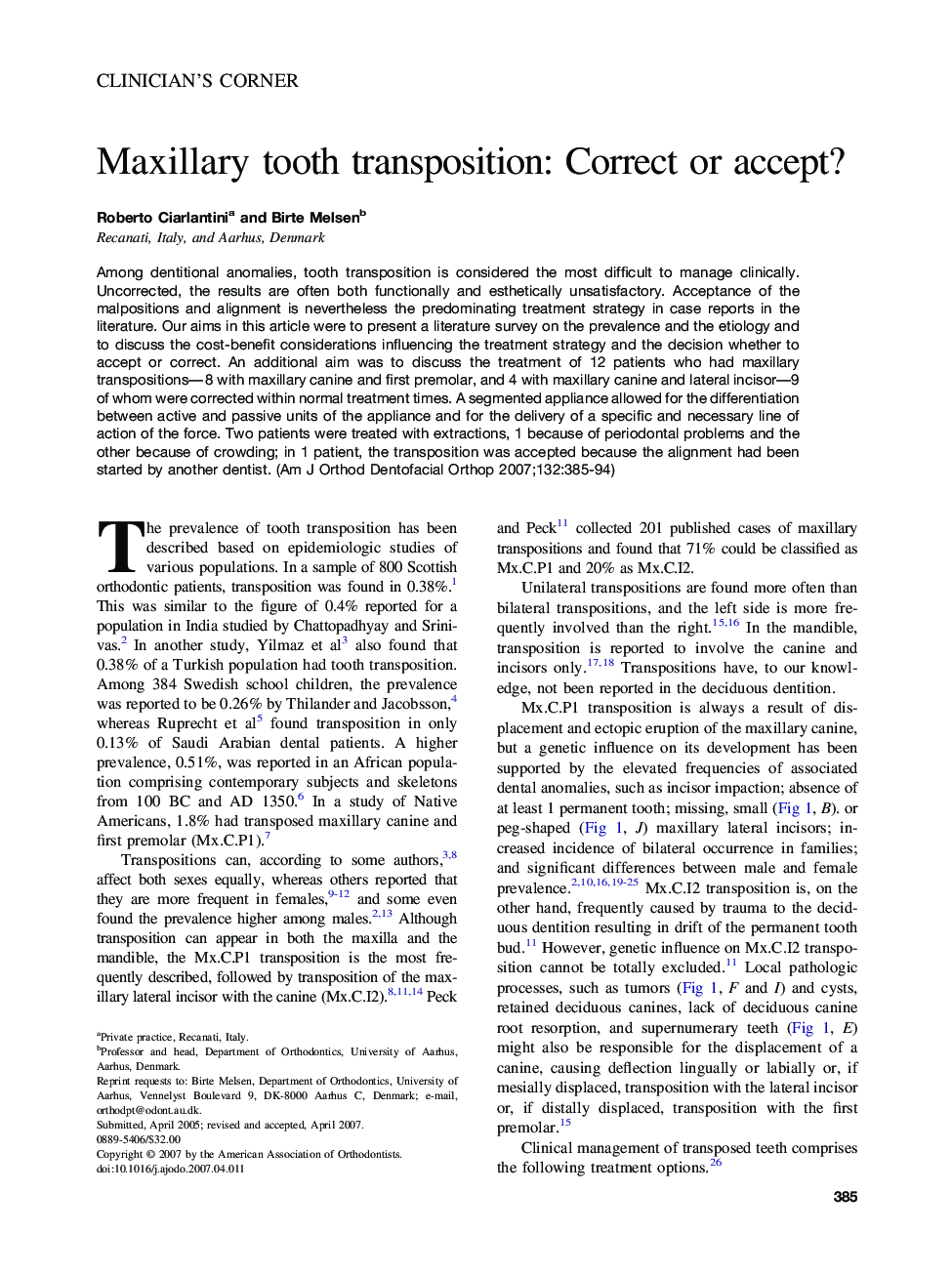| Article ID | Journal | Published Year | Pages | File Type |
|---|---|---|---|---|
| 3118937 | American Journal of Orthodontics and Dentofacial Orthopedics | 2007 | 10 Pages |
Among dentitional anomalies, tooth transposition is considered the most difficult to manage clinically. Uncorrected, the results are often both functionally and esthetically unsatisfactory. Acceptance of the malpositions and alignment is nevertheless the predominating treatment strategy in case reports in the literature. Our aims in this article were to present a literature survey on the prevalence and the etiology and to discuss the cost-benefit considerations influencing the treatment strategy and the decision whether to accept or correct. An additional aim was to discuss the treatment of 12 patients who had maxillary transpositions—8 with maxillary canine and first premolar, and 4 with maxillary canine and lateral incisor—9 of whom were corrected within normal treatment times. A segmented appliance allowed for the differentiation between active and passive units of the appliance and for the delivery of a specific and necessary line of action of the force. Two patients were treated with extractions, 1 because of periodontal problems and the other because of crowding; in 1 patient, the transposition was accepted because the alignment had been started by another dentist.
